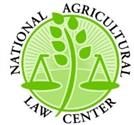Many of Ohio’s farm markets, u-picks, farm petting zoos, and other “agritourism” operations are preparing to open for their spring and summer activities. While these types of agritourism activities are popular, they raise unique liability concerns. That’s because there is always the risk of an injury or harm when bringing people onto the farm, whether allowing them to be near animals, riding on equipment, in crop and orchard areas, or engaging in physical activities. Along with readying the farm for the new season, agritourism operators should also plan for the possibility of a liability incident.
Here are five actions agritourism providers can take to manage liability risk.
- Conduct a safety review. Inspect your operation with visitor safety in mind. Remember, many visitors have never been on a farm or don’t understand what might harm them on a farm. Examine all areas visitors will be in, including surrounding “off limits” areas visitors might try to access, and identify any possible safety hazards. Pay extra attention to areas children will use. Consider these questions:
- Are the facilities, fences, gates, steps, play areas, and other structures in good repair?
- Are doors and gates working and latching properly?
- Are pesticides, herbicides, or chemicals out of sight and inaccessible?
- Are animal enclosures sound, do any “dangerous” animals need to be fully off limits to visitors, and are there handwashing stations near animal contact areas?
- Are there any accessible dangers that might attract children, such as ladders, equipment, lagoons, large tractor tires, and wells?
- Are parking areas and walkways sufficiently sized and buffered from traffic?
Look for the potential dangers, then take actions such as making repairs; installing blockades, fences, locks, or other structures to keep visitors away; putting up signs and warnings; providing instructions or maps; expanding parking areas or walkways; and removing unnecessary dangers.
- Complete our Agritourism Ready course. Be prepared for the possibility of an emergency situation—both natural and man-made disasters can raise the need for an emergency response. How an operation responds to an emergency can reduce harm to visitors and ultimately affect the operation’s risk of liability or harm. OSU offers a curriculum that helps agritourism operations reduce risks by developing an emergency management plan. Access this valuable and free resource at https://u.osu.edu/agritourismready/.
- Train employees. A business is legally responsible for the negligence of its employees, so it’s important to reduce the risk that an employee’s actions will cause or contribute to a visitor’s harm. Provide thorough safety training to agritourism employees. Make sure employees know how to do the job, including activities like operating equipment, maintaining and cleaning visitor areas, handling animals, overseeing children, and responding to a safety incident.
- Obtain agritourism insurance coverage. Insurance is an excellent liability management tool. But be aware that a typical farm insurance policy does not cover agritourism activities, and a separate endorsement or policy may be necessary. Even if a farm has a separate endorsement for agritourism, it’s still important to ensure that any new agritourism activities fall under the agritourism coverage. Now is the time to schedule a visit with the insurance provider and review the insurance policy. Don’t be secretive about what you’re doing in your operation. Share all activities with the provider and ensure that each activity is covered by the policy. If an activity is not covered or will require costly additional coverage, weigh the risk, costs, and benefits of continuing to offer the activity.
- Install the Ohio agritourism immunity sign. I’ve been surprised recently by how many operations I’ve visited that do not have an agritourism immunity sign on display. Posting the sign is a critical risk management tool. That’s because Ohio law provides civil immunity for qualifying agritourism providers if a visitor suffers harm or injuries due to the “inherent risks” of being on a farm. To receive the immunity, however, an agritourism provider must post the required agritourism immunity sign at the entrance to or near the agritourism activities. The agritourism immunity sign warns visitors that the operation is not liable for harm from inherent risks and that they are assuming the risk of participating in agritourism activities. But while it’s an important tool, don’t let the sign replace all of the other recommendations provided in this article. Read more about the immunity law and the agritourism immunity sign in our law bulletin, Ohio’s Agritourism Law, available on farmoffice.osu.edu.
Agritourism is a thriving industry in Ohio. Taking legal precautions to manage liability risk will help ensure that agritourism remains an important component of Ohio agriculture. To learn more about legal issues in agritourism, visit OSU’s Agritourism Law Library on the Farm Office website at farmoffice.osu.edu/law-library.







